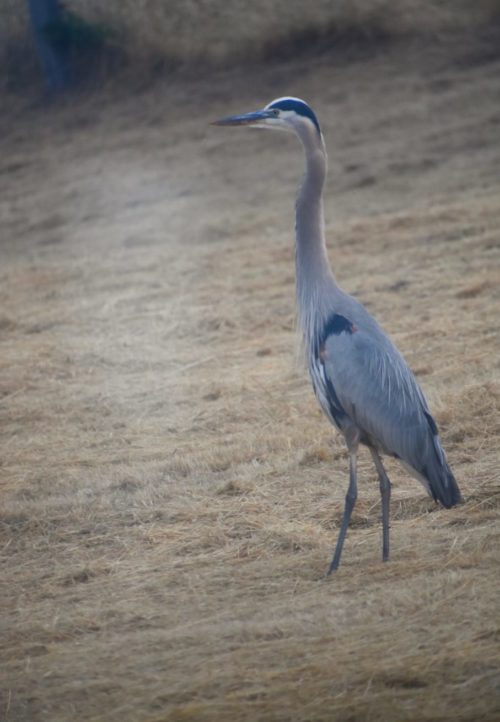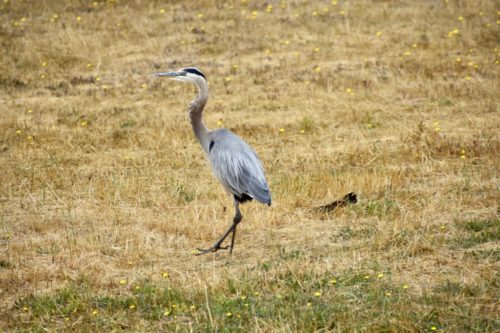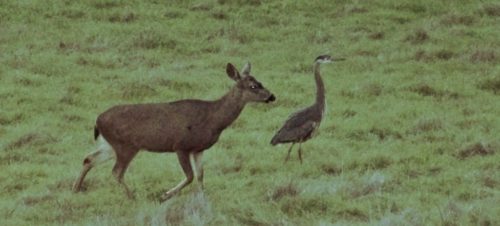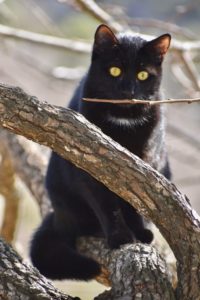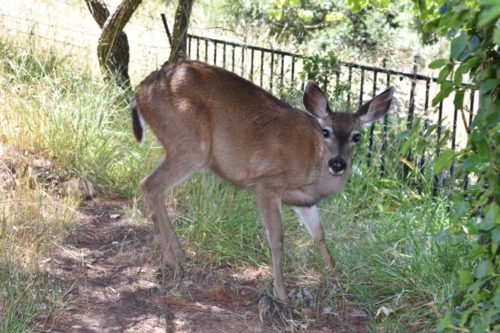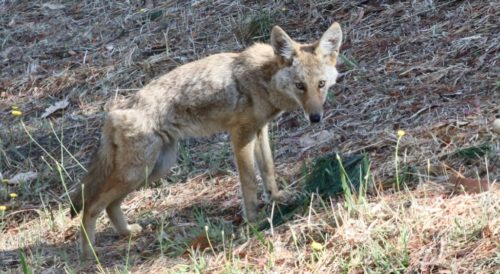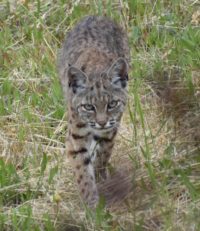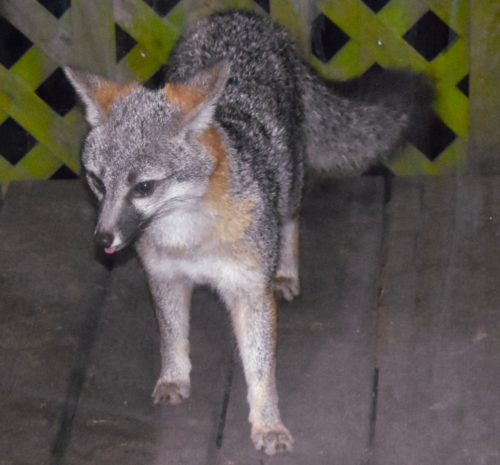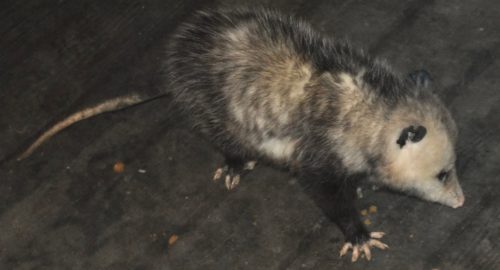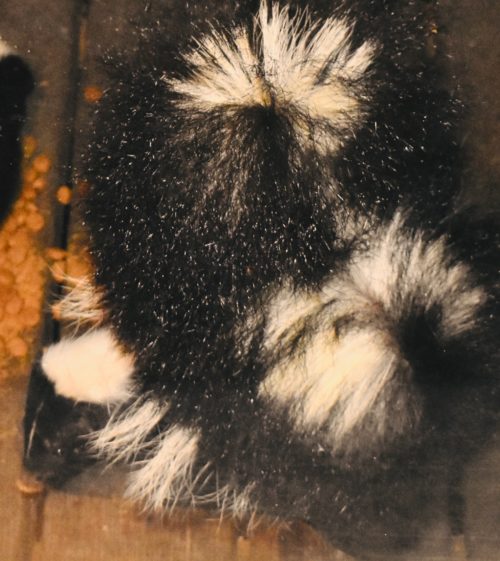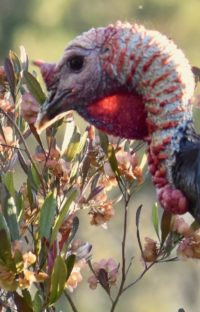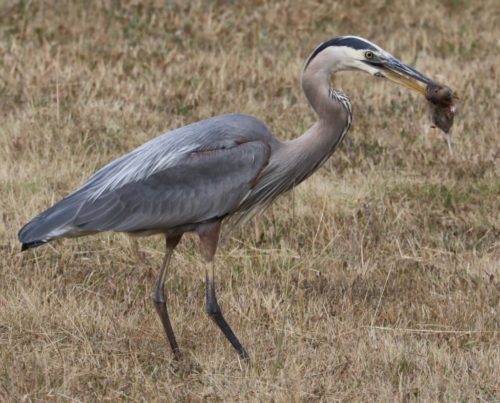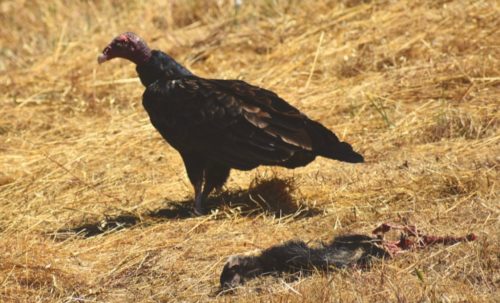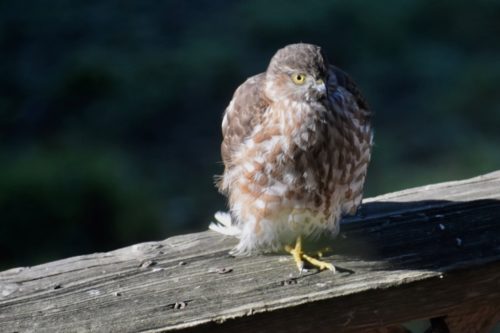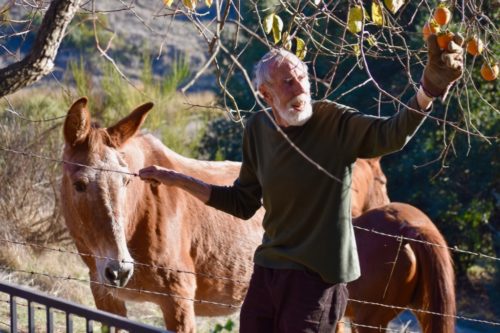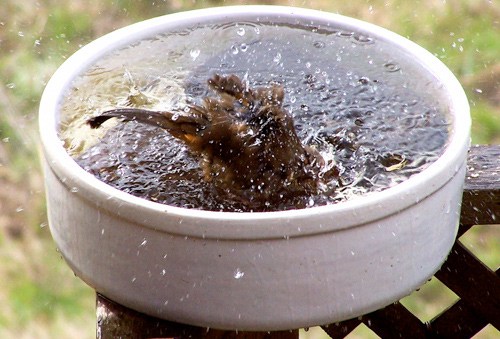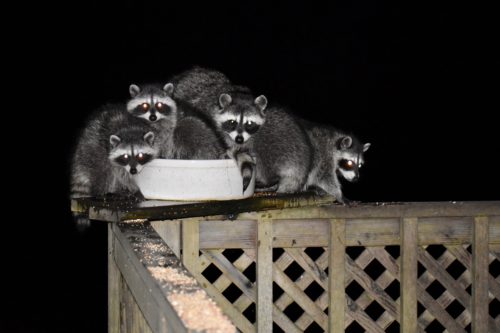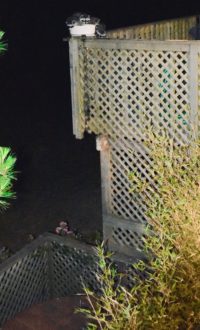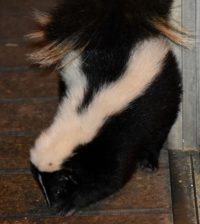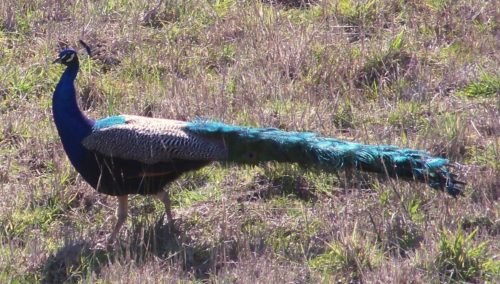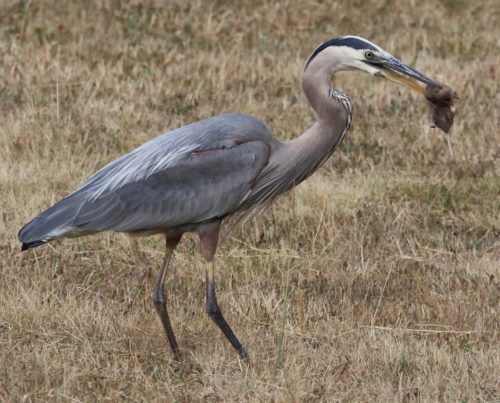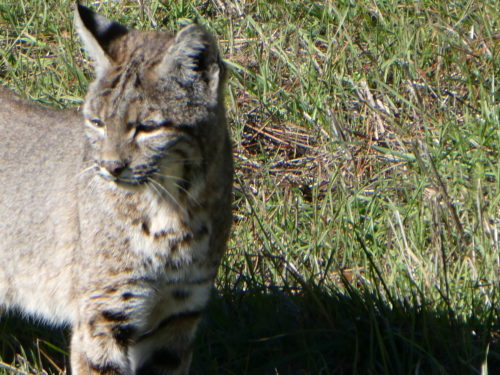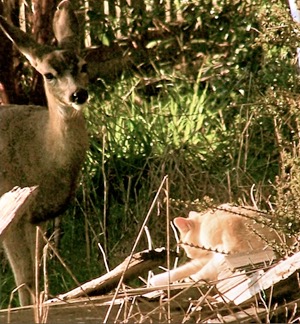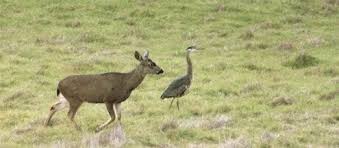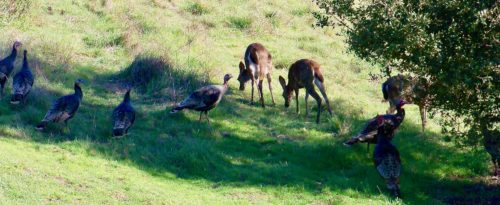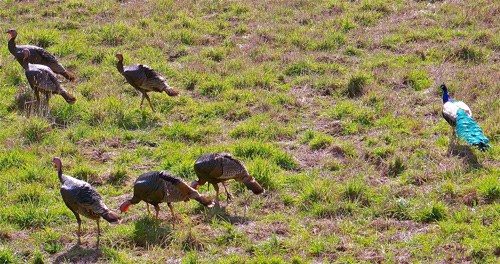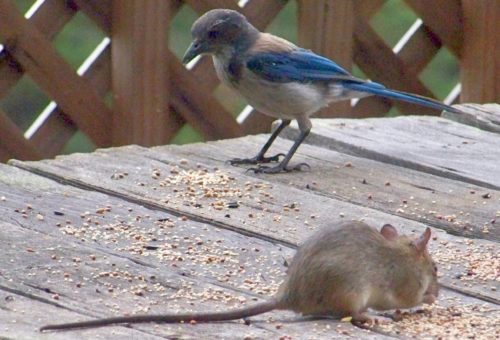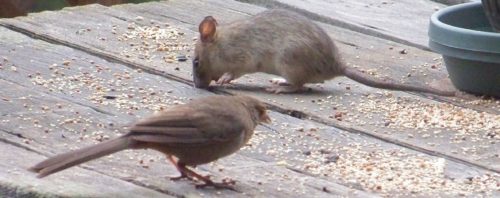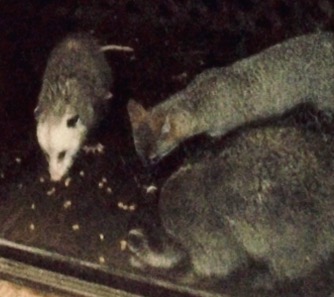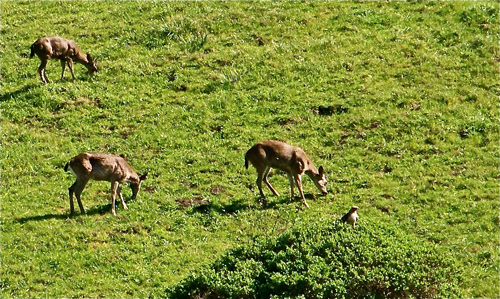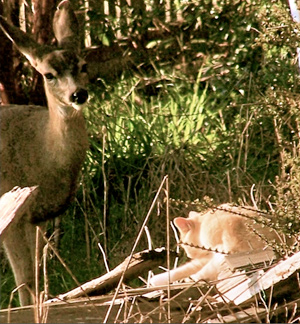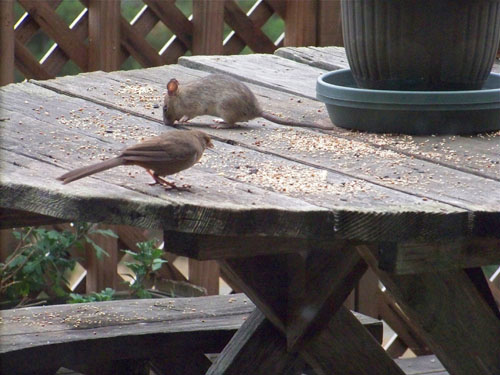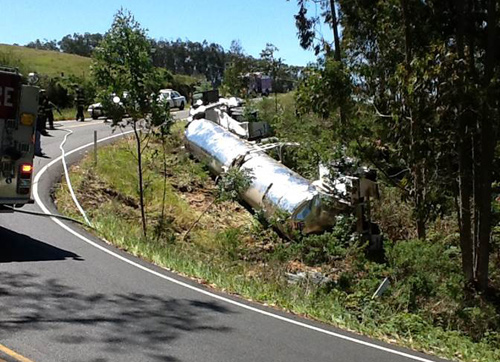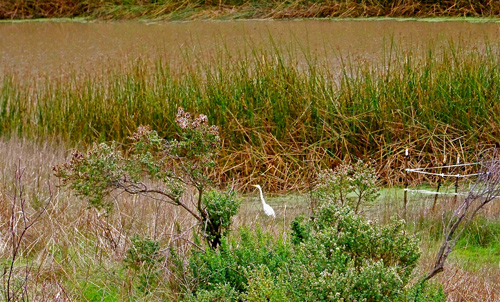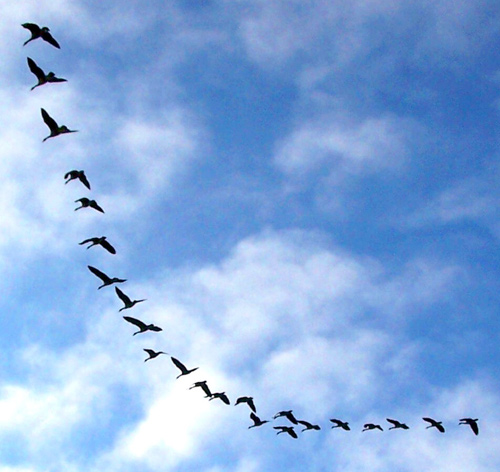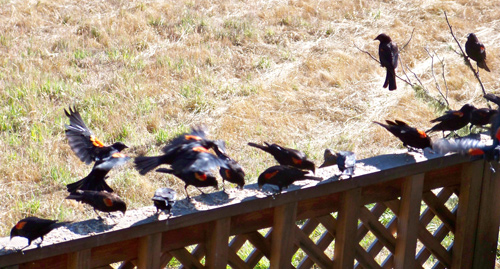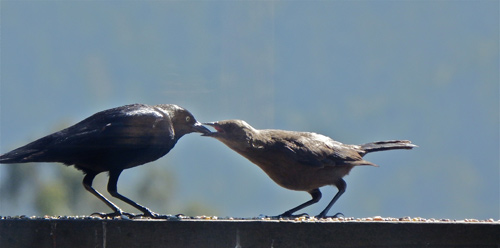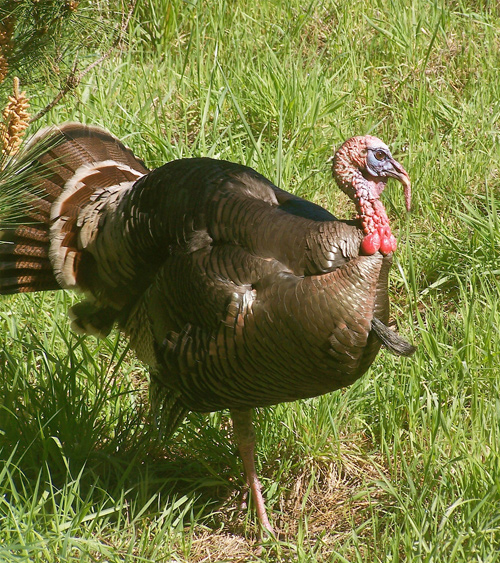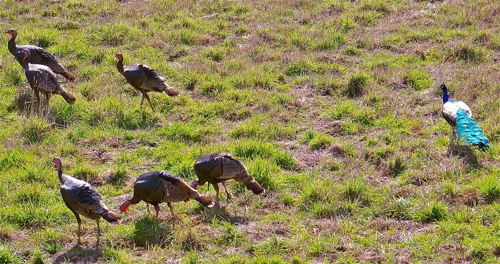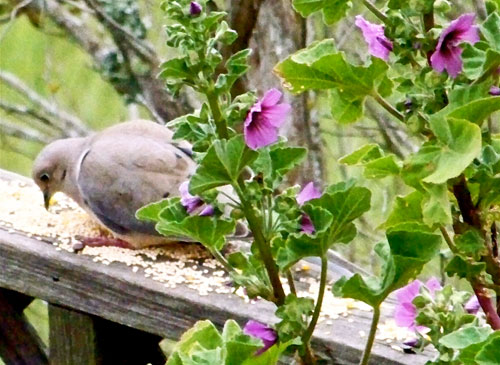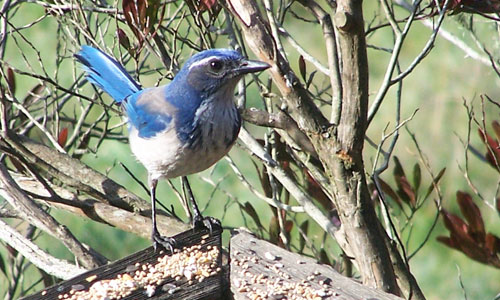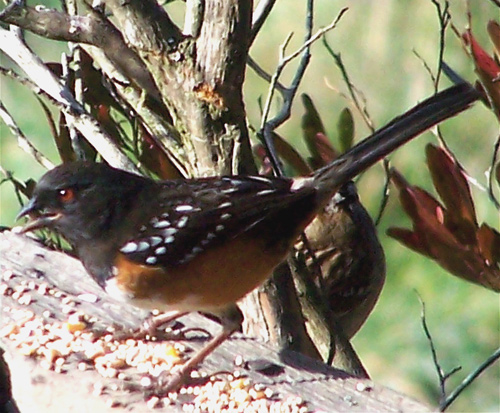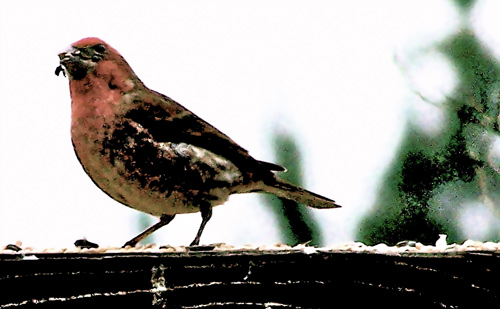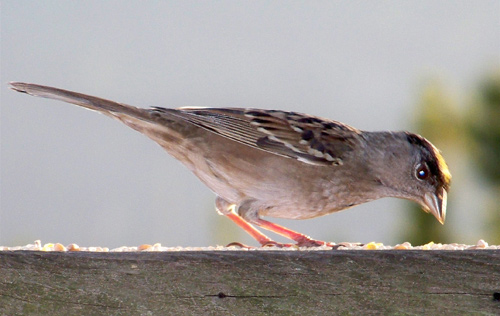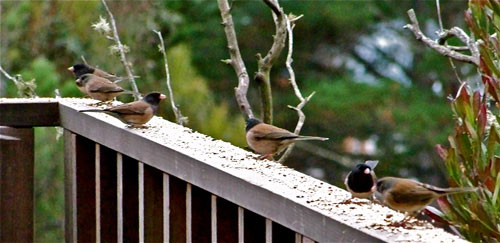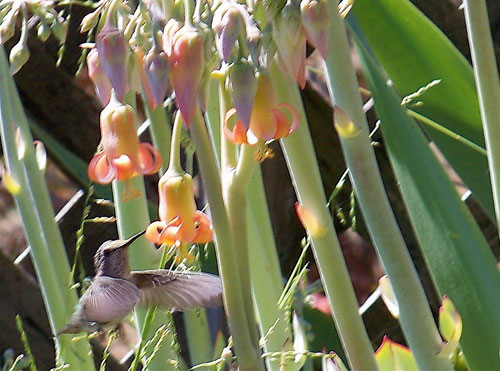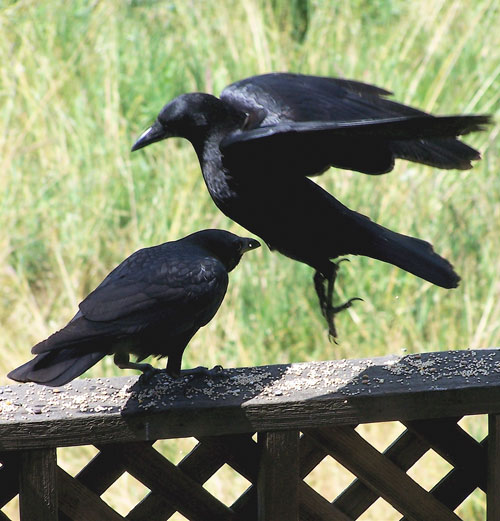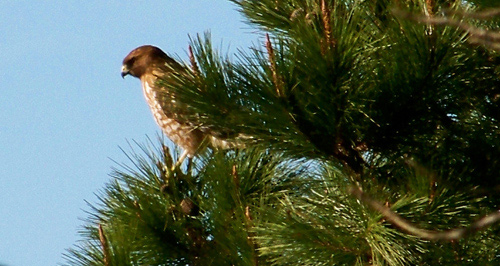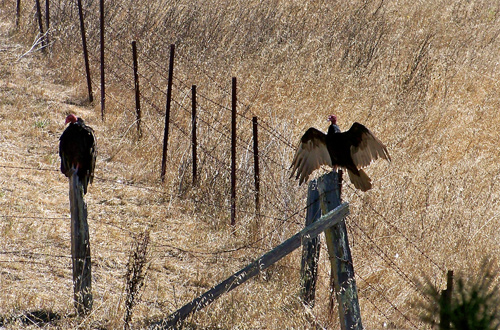Entries tagged with “Great blue heron”.
Did you find what you wanted?
Mon 11 Jul 2022
Caveat lectorem: When readers submit comments, they are asked if they want to receive an email alert with a link to new postings on this blog. A number of people have said they do. Thank you. The link is created the moment a posting goes online. Readers who find their way here through that link can see an updated version by simply clicking on the headline above the posting.

Headline in July 1 San Francisco Chronicle. I’ve been wondering in recent years whatever happened to Life magazine. Is this a clue?
 Outside our kitchen, an appropriately named “wake” of eight buzzards (aka vultures) takes a rest while on a search for corpses.
Outside our kitchen, an appropriately named “wake” of eight buzzards (aka vultures) takes a rest while on a search for corpses.
As a 35-year newsman, I’ve covered a lot of grim news, such as the trailside killer in Marin County and combat in El Salvador. Nonetheless, I’ve been unsettled by the current combination of news from around the world: the Covid pandemic, Russia’s invasion of Ukraine, mass shootings (which have killed more than 300 Americans already this year), the US Supreme Court’s overturning Roe v. Wade abortion rights, the court’s also revealing plans to throw out a number of environmental protections.
For my own peace of mind, I’m turning my attention to goings on in the animal world around Mitchell cabin. Here’s a bit of what I’ve been seeing.
 Two quail watching over nine of their chicks. (Photo by Lynn Axelrod Mitchell)
Two quail watching over nine of their chicks. (Photo by Lynn Axelrod Mitchell)

A raccoon appearing to be in prayer. She’s probably praying that the chaos in the human world doesn’t also devastate the animal world.

A great blue heron hunts in our field for gophers. (Photo by Lynn Axelrod Mitchell)

Mother raccoons have taught their kits to show up on our deck each evening in hopes of receiving handfuls of kibble. The kits are shy but curious and sometimes show up by themselves (as these four did on Sunday afternoon) hoping for food even though mom wasn’t there yet.

A raccoon mother climbs down out of a pine tree beside Mitchell cabin while her kit prepares to follow her.
It’s this sort of domesticity in nature that gives me relief from our human world.
Thu 1 Jul 2021
Posted by DavidMitchell under Uncategorized
Comments Off on Hospital-chart bloopers plus Great Blue Herons
Caveat lectorem: When readers submit comments, they are asked if they want to receive an email alert with a link to new postings on this blog. A number of people have said they do. Thank you. The link is created the moment a posting goes online. Readers who find their way here through that link can see an updated version by simply clicking on the headline above the posting.

A Great Blue Heron stepping out in front of Mitchell cabin Monday. Herons and egrets drop by occasionally to hunt for gophers. This guy later speared one coming out of its hole.
______________________________
A compendium of bloopers spotted on hospital charts is making the rounds in West Marin:
The patient refused autopsy.
The patient has no previous history of suicides.
Patient has left white blood cells at another hospital.
She has no rigors or shaking chills, but her husband states she was very hot in bed last night.
Patient has chest pain if she lies on her left side for over a year.
On the second day the knee was better, and on the third day it disappeared.
The patient is tearful and crying constantly. She also appears to be depressed.
The patient has been depressed since she began seeing me in 1993.
Discharge status: Alive but without permission.
Healthy appearing decrepit 69-year old male, mentally alert but forgetful.
Patient had waffles for breakfast and anorexia for lunch.
She is numb from her toes down.
While in ER, she was examined, x-rated and sent home.
The skin was moist and dry.

A deer and heron together went looking for breakfast awhile back. Herons are crepuscular, meaning that they’re most active around sunrise and sunset.
____________________________
Occasional, constant infrequent headaches.
Patient was alert and unresponsive.
Rectal examination revealed a normal size Thyroid.
She stated that she had been constipated for most of her life, until she got a divorce.
I saw your patient today, who is still under our car for physical therapy.
Both breasts are equal and reactive to light and accommodation.
Examination of genitalia reveals that he is circus sized.
The lab test indicated abnormal lover function.
Skin: somewhat pale but present.
The pelvic exam will be done later on the floor.
Patient has two teenage children, but no other abnormalities.
Fri 19 Feb 2021
Posted by DavidMitchell under Uncategorized
Comments Off on Looking animals in the eye
This week we’ll look animals, both domestic and wild, in the eye to get a sense of what they see.

Newy, the stray cat we’ve taken in and who has been mentioned here before, can have an intense gaze when she’s looking off at something. It’s noticeable enough that it prompted me to look into, so to speak, the eyes of not only cats but other animals as well. A cat’s vision is not as all-powerful as it appears. A cat is most sensitive to blues and yellows and does not see colors like red, orange, or brown.

A blacktail doe looks up from grazing outside our bedroom window. The pupils in a deer’s eyes are horizontal, not round, and a flash camera makes them look blue.

A coyote displays his predatory nature as he stares into a field. As it happens, just now as I type this, coyotes are howling outside Mitchell cabin. (Photo by neighbor Dan Huntsman)

The no-nonsense look of a bobcat in the field below Mitchell cabin.

Foxes too are predatory, but their gaze makes them appear more curious than vicious.

Possums have good night vision but don’t distinguish between colors very well. Overall, their vision is so weak they must depend on smell and touch to find food.

Skunks, like possums, have very poor vision and navigate largely via their senses of smell and hearing.

Wild turkeys, on the other hand, see in color and “have an excellent daytime vision that is three times better than a human’s eyesight and covers 270 degrees,” according to ‘Facts about Wild Turkeys.’ “They have poor vision at night, however, and generally become warier as it grows darker.”

‘Livingbird Magazine’ reports that “Great Blue Herons can hunt day and night thanks to a high percentage of rod-type photoreceptors in their eyes that improve their night vision.” Near Mitchell cabin, a gopher with the baleful stare of death hangs from the heron’s beak.

Buzzards have such “keen eyesight,” Seaworld claims, that “it is believed they are able to spot a three-foot carcass from four miles away on the open plains.”

A stern stare. Coopers Hawks are skillful hunters and like other hawks have excellent vision.

The smirk of a Western Fence Lizard (also known as a Blue Belly for obvious reasons). It’s one of the most common lizards around Mitchell cabin. As for their vision, most lizards have excellent eyesight, and some can see into the UV spectrum.

Somehow my work glove hand ended up on the persimmon, and my bare hand on the barbed-wire fence. (Photo by Lynn Axelrod Mitchell)
This moment became a test of my vision and not in looking at the persimmons growing between the fields of Mitchell cabin and Arabian Horse Adventures. After some staring, I concluded that the Arabian waiting patiently for a persimmon is, in fact, a female mule. Nonetheless, I eventually gave her some fruit. Later I found out the mule had arrived in the pasture not long ago after its owner died. So far I’ve never seen any of the stable’s trail riders on it. Arabian Mule Adventures.
Tags: animal eyesight, blacktail deer, blue belly, buzzards, Cooper's hawk, foxes, Great blue heron, jackrabbit, mule, possum, skunks, Western fence lizard
Fri 3 Jul 2020
Posted by DavidMitchell under Photography, West Marin nature, Wildlife
Comments Off on A haughty hottie?
Caveat lectorem: When readers submit comments, they are asked if they want to receive an email alert with a link to new postings on this blog. A number of people have said they do. Thank you. The link is created the moment a posting goes online. Readers who find their way here through that link can see an updated version by simply clicking on the headline above the posting.
“Do you see that blonde over there?” a friend asked me in town today. “She’s a little hottie.”
“A little haughty?” I replied in confusion. “That’s too bad.” Then it was my friend’s turn to be confused. “A haughty hottie?”

A livestock-feeder bowl on the railing of Mitchell cabin’s deck is used as a birdbath where numerous birds both bathe and drink. Here a towhee takes a bath.

Other critters also use the birdbath, including raccoons such as these yesterday. Almost every evening, a mother raccoon and her four kits try to squeeze into it together. And like the birds, they’re not at all squeamish about drinking their own bathwater.

The kits’ struggles for space in the bowl sometimes worry me a bit, for one side of the bowl is about 20 feet off the ground. Ironically, another side is above Mitchell cabin’s hot tub, and more than once while in the tub, I’ve been surprised by sprinklings of cold water that turned out to be splashes from a bird taking a bath.

A skunk or two also show up on our deck virtually evening to eat any kibble the raccoons leave behind. This one showed up Wednesday. They raise their tails when disturbed but never spray, at least while on the deck.

A lonely peacock, which mostly hangs out near Highway 1 a quarter mile away, occasionally wanders over to our yard, but we’re mostly aware it’s in the vicinity because of its cries at night. During the breeding season, peacocks scream to attract peahens and sometimes merely because they hear other peacocks.

Got him. Two weeks ago this blog published photos of a young great blue heron hunting gophers near our cabin, and a few days later neighbor Dan Huntsman snapped this great shot of the heron holding a gopher it had just caught.

A bobcat made one of its periodic visits to Mitchell cabin this week. Like the heron, bobcats like to hunt gophers here.
As has been in the news a lot lately, some police actions warrant special scrutiny, both in the US and abroad. Here’s a incident reported in the June 17 San Francisco Chronicle:
A man in Vienna was fined $565 for breaking wind loudly in front of a group of policemen on June 5. The man had behaved provocatively during an encounter with officers, according to police, and when he got up from a bench, he “let go a massive intestinal wind apparently with full intent.” The man was cited for offending public decency. Police later commented online, “Of course no one is reported for accidentally letting one go,” but “our colleagues don’t like to be farted at so much.” The Chronicle headlined its account: “Farting fine,” which it clearly wasn’t.
Tue 8 Oct 2019
Posted by DavidMitchell under West Marin nature, Wildlife
Comments Off on The charm of inter-species neighborliness
Caveat lectorem: When readers submit comments, they are asked if they want to receive an email alert with a link to new postings on this blog. A number of people have said they do. Thank you. The link is created the moment a posting goes online. Readers who find their way here through that link can see an updated version by simply clicking on the headline above the posting.
Some critters get along with their animal neighbors better than we might expect. Here’s a look at some inter-species neighborliness that’s caught my eye around Mitchell cabin.

A curious black-tailed doe watches a housecat clean itself.

A great blue heron goes gopher hunting near Mitchell cabin beside a grazing deer.

Seven wild turkeys hunt and peck alongside four black-tailed deer.

Wild turkeys, in fact, can often be found roaming around with other creatures, such as this lone peacock.

A scrub jay and a roof rat comfortably eat birdseed side by side on our picnic table.

Towhees are nowhere near as brazen as jays, but this one seems unconcerned about eating next to a roof rat.

Raccoons and skunks manage to dine together on our deck almost every night. As previously noted, raccoons, like dogs, identify each other by sniffing rear ends, including the backsides of skunks. The skunks often shoulder aside raccoons while competing for food but for some reason never spray them.

Another milepost in inter-species mingling: a possum, fox, and raccoon eat nose to nose to nose outside our kitchen door.
Sun 26 Apr 2015
Posted by DavidMitchell under General News, Marin County, West Marin nature, Wildlife
Comments Off on Birds, deer, a cat, a rat, a face in the flames, and another overturned truck
I’m always fascinated by how well some wildlife of different species get along with each other. Deer in particular seem to enjoy the company of other species.

I was reminded of this felicitous phenomenon when I spotted a hawk (lower right) keeping company with a small herd of deer grazing near Mitchell cabin. _____________________________________________________________
 A curious blacktail doe watches a house cat clean itself on a woodpile.
A curious blacktail doe watches a house cat clean itself on a woodpile.
I’ve also seen deer show similar interest in rabbits resting in my field.
_______________________________________________________

While another doe grazes, she keeps company with a great blue heron as the bird hunts gophers in my pasture.

A roof rat and a towhee eating birdseed side by side on our picnic table. It’s such a relaxed relationship that neither appears to notice the presence of the other. ________________________________________________________________
 Some things that happen around Mitchell cabin are more of a surprise.
Some things that happen around Mitchell cabin are more of a surprise.
Friday night I was lying on my side looking into my woodstove when I noticed a phantasmagorical head sticking out of the flames.
At first it appeared to be wrapped in newspaper headlines. Lynn, however, explained that she had used some discarded fundraising solicitation forms to light the fire.
____________________________________________________________

Yet another truck wreck in West Marin. A week ago Saturday, a truck and trailer rig hauling grocery supplies overturned on the Point Reyes-Petaluma Road, blocking traffic for nine hours.
Shortly before noon today, a milk truck overturned on Highway 1 near Nicks Cove, closing the highway for several hours. “The truck, heading south near Nicks Cove, failed to negotiate a turn and landed on its side along the highway,” said Mike Giannini, a battalion chief with Marin County Fire Department.
“The accident caused a hatch to fail and allow approximately 4,000 gallons of milk to be discharged from the tank. Additionally, about 100 gallons of diesel fuel was spilled. Firefighters were able to contain the diesel with absorbent materials.
“At the time of the accident, the milk was approximately 100 yards from Tomales Bay,” Giannini reported at 5 p.m. “Crews are continuing to monitor any possible threat to bay waters.
“The driver of the truck was evaluated by Marin County Fire Department paramedics and was transported to the hospital for evaluation. The exact cause of the accident is under investigation.”
All this is getting to be routine. Let’s see where next weekend’s truck wreck occurs.
Sun 18 Jan 2015
Here is a gallery of my bird photography, as was promised two weeks ago. The photos were all shot at Mitchell cabin or around it.

One reason Mitchell cabin gets quite a variety of birds and other wildlife is that its fields come within a few feet of a neighbor’s stockpond, where numerous creatures show up daily to drink or hunt. Here a common egret wades through shallow water, looking for frogs, small fish, or insects.

While it’s hunting, a great blue heron will repeatedly stand motionless and then use lightning-fast strikes with its sharp bill and long neck to catch gophers in Mitchell cabin’s fields or frogs and fish in the pond.

The cabin is under the commute route for Canada geese which travel daily between the Point Reyes National Seashore and the Marin French Cheese Factory’s ponds in Hicks Valley. It’s easy to tell when they’re coming; they honk as much as Homo sapiens commuters stuck in traffic.

A flock of tri-colored blackbirds swoop down onto the deck railing when Lynn or I spread a line of birdseed along it morning and evening. Many of the blackbirds nest in reeds at the pond.

Even after they’ve grown old enough to feed themselves, young blackbirds for awhile still want to be fed by their parents. Once in awhile the parents do oblige them, but over a few days, they wean their youngsters. (Photo by my partner Lynn Axelrod)

A tom turkey struts his stuff. In 1988, a hunting club working with the State Department of Fish and Game introduced non-native turkeys into West Marin on Loma Alta Ridge, which overlooks the San Geronimo Valley. By now there are far more turkeys than turkey hunters, and their flocks have spread throughout West Marin.

A little more than a year ago, a lone peacock showed up and soon began hanging out with a flock of wild turkeys. Months later, he can still be seen bringing up the rear as the flock hunts and pecks its way across the fields.

A male quail. Male and female quail both have crests. The males’ crests are black, the females, brown.

The Eurasian collared dove is a native of the Middle East that spread across Europe in the 20th Century, according to the Audubon Society. In 1974, it was accidentally introduced into the Bahamas. In the 1980s, the doves discovered the US was only a short flight away and began taking trips to Florida. In less than 30 years, the doves have spread throughout most of this country.

California western scrub jays show up immediately when we put seed on the railing.

A California towhee freshens up in the birdbath on the deck.

Rufous-sided towhees are among the most colorful birds that show up for birdseed.

A purple finch chews a sunflower seed it found among other seeds on the railing.

The presence of golden-crowned sparrows is often announced by their song, which sounds like Three Blind Mice in a minor key.

Oregon juncos keep a close eye on Mitchell cabin’s deck, and it’s never long after we put out birdseed that they begin showing up. They’re less skittish than most other birds and will sometimes begin pecking seeds off the railing before we’ve departed.

A female hummingbird. Hummingbirds drop by for drinks whenever we have flowers in bloom.

American crows, which are native to North America, are considered intelligent birds. Here, for example, they demonstrate their mastery of jitterbug.

A crow skins its caterpillar dinner in the birdbath.

Redtailed hawks dine on reptiles, small mammals, and birds. Their call is a two-or-three second scream which trails downward. Redtails are monogamous and typically reach sexual maturity at age two or three and can live to age 21 in the wild.

When I spotted this great-horned owl in a tree 200 feet or more from the cabin one evening, I decided to try photographing it. However, the light was so low that when I triggered the shutter, the little flash on my old-fashioned Kodak flipped open and fired. To my amazement, the flash was reflected in the owl’s eyes despite the bird’s distance from me. With eye shine (see tapetum lucidum) like that, it’s no wonder owls can see well in the dark.

Two buzzards warming themselves in the morning sun.
This gallery doesn’t include all the birdlife around Mitchell cabin, of course, but it’s a sampling of our avian neighbors. They’re not the only reason I enjoy living where I do, but they’re a big part of it.
Tags: American crow, buzzards, California western scrub jay, Canada geese, common egret, Eurasian collared dove, Golden-crowned sparrow, Great blue heron, great-horned owl, purple finch, quail, redtailed hawk, Rufous-sided towhee, towhee, Tricolored Blackbirds, wild turkeys
Tue 8 Jan 2013
From a butterfly to a pair of badgers, from a newt and a salamander to a bobcat and a coyote, this posting is a collection of some of my favorites from among the photos I’ve taken of wildlife around Mitchell cabin.

A Buckeye butterfly atop a chrysanthemum on my deck.

Closeup of an amphibian, an arboreal salamander.

Lying low, another amphibian.
A Pacific tree frog’s color depends on where it is at the moment. Unlike chameleons, whose colors change to match background colors, tree frogs’ colors change (between brown and green) depending on how dry or moist their surroundings are.

A poisonous amphibian.
The skin of a California newt such as this secretes a neurotoxin, tetrodotoxin, that is hundreds of times more toxic than cyanide.

A macho reptile.
Male Western fence lizards do pushups to intimidate other males. In the process they reveal their blue undersides, which is why they’re sometimes called Blue-bellies.

A colorful but seldom seen reptile.
I found this Pacific ring-necked snake in a rotten log while splitting firewood. The snake eats very small creatures, tadpoles, insects, and especially salamanders. It has just enough venom to immobilize them but is not dangerous to humans.

A beady-eyed garter snake warms itself in the sun on my driveway.
Garter snakes are the most-common genus of reptile in North America. Although they are venomous, their venom is too mild to harm humans. However, when they’re disturbed, garter snakes emit a foul-smelling secretion from a gland near their anus.
Common garter snakes come in innumerable variations and are found in fields, forests and wetlands nationwide. Like this snake, adults average about four feet in length. In West Marin, their diet typically consists of tadpoles, slugs, and earthworms. But unlike other snakes, they don’t eat insects. When first born, the snakes are prey for bullfrogs. Hawks and foxes eat adults.

Gopher snakes are non-venomous although they don’t want you to know it.
“When disturbed, the gopher snake will rise to a striking position, flatten its head into a triangular shape, hiss loudly and shake its tail at the intruder,” the Arizona-Sonora Desert Museum website notes. “These defensive behaviors, along with its body markings, frequently cause the gopher snake to be mistaken for a rattlesnake.”

Golden-crowned sparrow disguised as a stained-glass window.

Heading for a drink at the birdbath on Mitchell cabin’s deck, a crow hops over a second crow, which stays put at their birdseed buffet.

A great blue heron hunting gophers in my field.

Chipmunks visit Mitchell cabin only occasionally, so I felt lucky to snap this photo of one.

A Western gray squirrel as seen from my bedroom window.
Every morning the ground around Mitchell cabin is littered with the freshly cut tips of pine branches because of this squirrel and his clan. Squirrels like to feed on pine trees’ cambium layer, which is immediately under the bark, and in the process they gnaw off twigs.

Trying not to be noticed.
West Marin’s large jackrabbits, which some people call black-tailed hares, are often seen in the late afternoon and evening around Mitchell cabin. To avoid catching the eye of predators, jackrabbits typically sit motionless unless the danger comes too close. Then they suddenly spring away, making sharp, evasive turns as they flee.

A gray fox on Mitchell cabin’s deck.

Young raccoons retreat to a tree when they feel threatened by other animals.

A blacktail doe nurses one of her two fawns.

Relying on its spots for camouflage, a newly born fawn tries to be invisible in tall grass by lying absolutely motionless even though I was leaning over it to take a photo.

A buck and two fawns bounding across tractor-mowed grass.

A mother badger and her cub sun themselves on the mound of dirt around their burrow (known as a “sett”).

A bobcat hunting outside my kitchen window.

A coyote heads for cover in, appropriately enough, a patch of coyote brush.

Besides photographing the wildlife around Mitchell cabin, I also enjoy having a bit of fun with it. My posting about encouraging a bodhisattva possum on her path to spiritual enlightenment has proven to be one of the best-read I’ve ever put online.

I take each species’ disposition into account when determining what it is best suited to learn. Raccoons, as you might guess, are natural bartenders.
 The biggest challenge I’ve faced in training wildlife has been convincing different species to get along with each other.
The biggest challenge I’ve faced in training wildlife has been convincing different species to get along with each other.
I felt a bit like a miracle worker when I finally got a possum, a fox, and a raccoon, none of which traditionally like each other, to dine nose to nose just outside my kitchen door.
I did it by setting out well-separated handfuls of peanuts for them and over time moving the handfuls closer and closer together. Now why can’t diplomats do that in the Middle East?
Tags: arboreal salamander, badgers, blacktail deer, bobcat, Buckeye butterfly, California newt, chipmunk, coyote, crows, garter snake, Golden-crowned sparrow, gopher snake, Great blue heron, grey fox, jackrabbit, Pacific ring-necked snake, Pacific tree frog, possum, raccoons, Western fence lizard, Western gray squirrel

 Outside our kitchen, an appropriately named “wake” of eight buzzards (aka vultures) takes a rest while on a search for corpses.
Outside our kitchen, an appropriately named “wake” of eight buzzards (aka vultures) takes a rest while on a search for corpses. Two quail watching over nine of their chicks. (Photo by Lynn Axelrod Mitchell)
Two quail watching over nine of their chicks. (Photo by Lynn Axelrod Mitchell)
